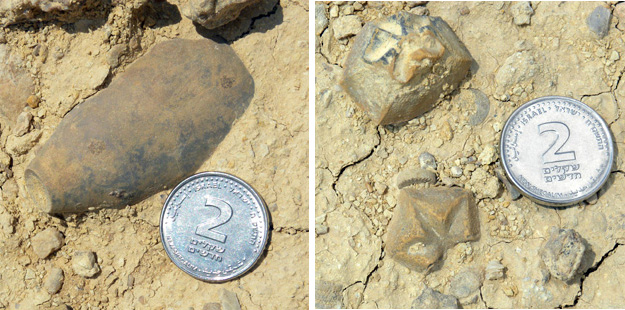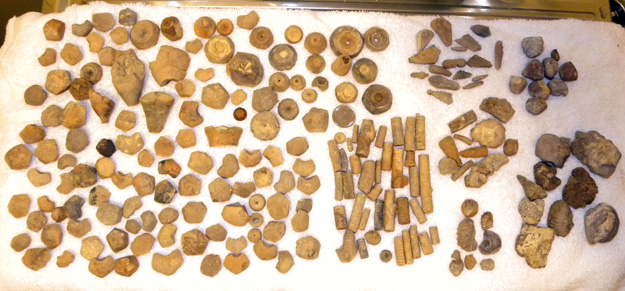MAKHTESH GADOL, ISRAEL–Today I mapped exposures of a particular fossiliferous unit in the Matmor Formation. It meant climbing up and down steep hills bent over the ground scanning for fossils. It is a remarkable skill we humans have for visually sorting through millions of images and then suddenly noting the one set of curves or angles or colors that identify a target. In my case I walked over thousands of square meters of rocky ground to spot bits of fossil crinoids, as in the photos below.

Crinoid calyx as found in the Matmor Formation (left); calyx fragments (right). I use the two-shekel coin for scale because conveniently it is two centimeters in diameter! Specimens found at N30.92907°, E34.97295°.
These crinoids are indicators of a unique community of echinoderms, brachiopods, sponges and corals found near the middle of the Matmor Formation. I collected enough specimens from several localities for analysis in the Wooster paleontology lab this winter and spring. I hope these fossils can be the basis of a student Independent Study project in Israel next year. It was much fun collecting these specimens because I never knew what treasure would turn up on the next hillside. A bit dangerous this kind of enthusiastic collecting in the desert because it is easy to forget to drink water — or even to stand up straight occasionally!




Pingback: Wooster Geologists » Blog Archive » Crinoid success